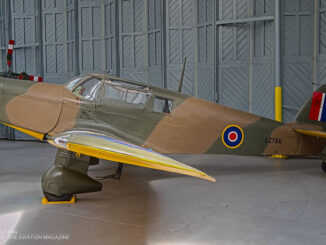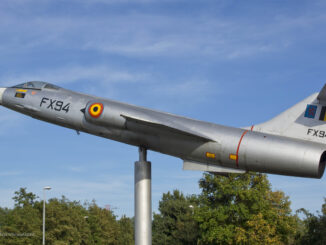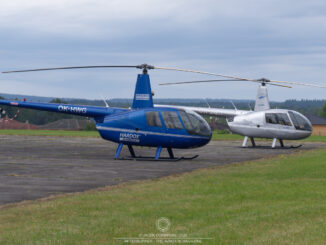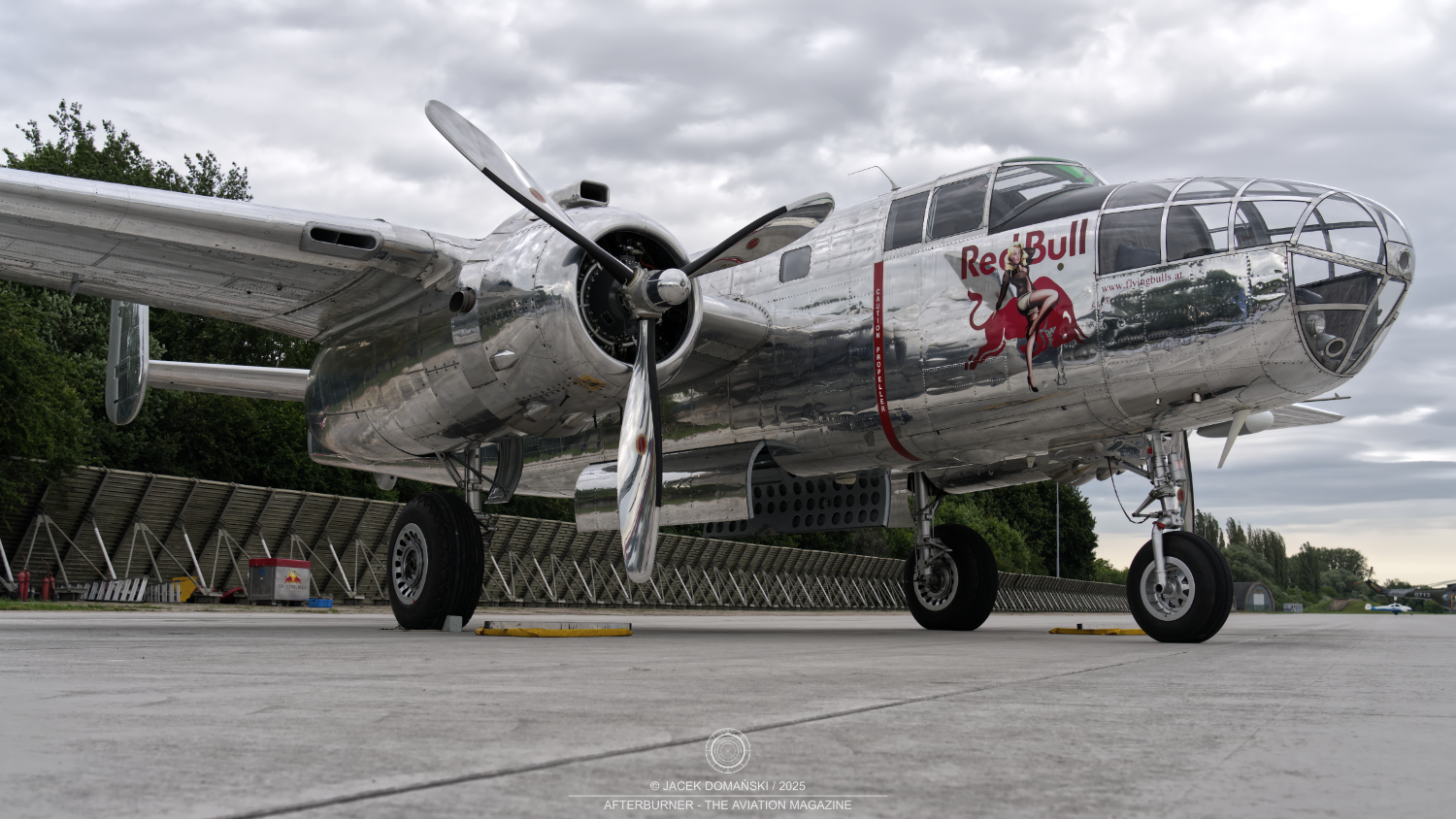 On 19th August 1940, the prototype of B-25 Mitchell twin-engine medium bomber, performed its maiden flight at Mines Field, Los Angeles.
On 19th August 1940, the prototype of B-25 Mitchell twin-engine medium bomber, performed its maiden flight at Mines Field, Los Angeles.
The story of the well-known B-25 Mitchell bomber began in the late 1930s, when the United States Army Air Corps (USAAC) issued requirement for a new attack and bomber aircraft. North American Aviation was one of the companies that entered the competition, submitting an aeroplane known as the NA-40.
The NA-40 was developed from the XB-21 (company designation NA-39) – a successful North American design from 1936 that had already been approved by the military authorities for serial production but was eventually cancelled.
The aircraft that entered into the USAAC competition was a twin-engine bomber, powered by Pratt & Whitney R-1830 radial engines and manned by a crew of five. Its prototype made its maiden flight in January 1939 but, being both underpowered and unstable in flight, the aircraft lost out to the Douglas DB-7 (later known as the A-20 Havoc).
In March of 1938, the USAAC opened another competition, this time for a future medium bomber. North American responded with the NA-62 concept, a further development of the earlier NA-40.
In September of next year, the NA-62 and another design proposed by Martin (later known as the B-26 Marauder) were announced as the winners. However, due to rising global tensions and the awareness of an impending war, both designs were approved off the drawing board, without the usual evaluation of prototypes.
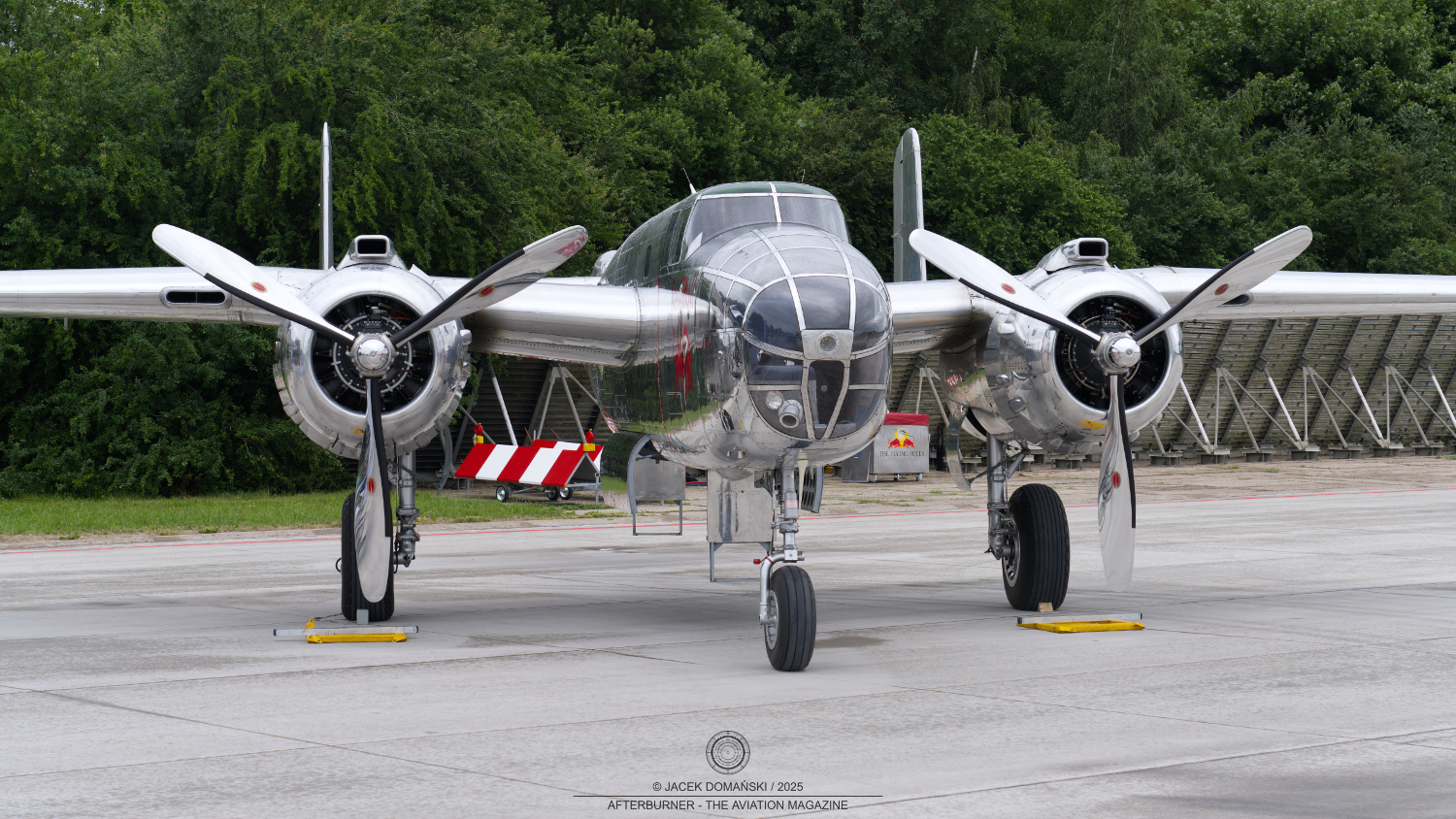
The first NA-62 prototype (s/n 40-2165) took off for its maiden flight on 19th August 1940 from Mines Field in Los Angeles (today’s Los Angeles International Airport). Shortly afterwards, the bomber aeroplane was approved for serial production and officially named the B-25 Mitchell in honour of Major General William Mitchell, a pioneer of US military aviation. According to Boeing (the official successor of North American Aviation), producing the first aircraft required 8,500 original drawings and 195,000 engineering man-hours.
The initial production series was powered by two R-2600-9 engines, each generating 1,350 hp. The aircraft could carry up to 1,600 kg of bombs and was armed with four machine guns. In 1941, the first production variant of the aeroplane, designated B-25A, entered active service. Within a year, it was succeeded by a modernised version, the B-25B.
In April of 1942, the North American B-25 Mitchell entered aviation history. A formation of sixteen B-25B aircraft, led by Lt. Col. Jimmy Doolittle, took off from the aircraft carrier USS Hornet and carried out a successful air raid against mainland Japan. This daring operation, conducted just four months after the attack on Pearl Harbor, boosted American morale and brought worldwide recognition to the aircraft.
In the following years, the B-25 became one of the most widely used medium bombers within the Allied forces. Nearly 10,000 examples were built, and the aircraft saw combat in every theatre of the Second World War. In addition to the USAAF, the B-25 was operated by the Royal Air Force, the Royal Australian Air Force, the Polish, French and Dutch air forces in exile, the Soviet Air Force, the Brazilian Air Force, and the Chinese Air Force.
The Indonesian Air Force was reportedly the last one to keep the B-25 Mitchell in active service, with last examples of the aircraft being retired as late as in the mid-1970s.
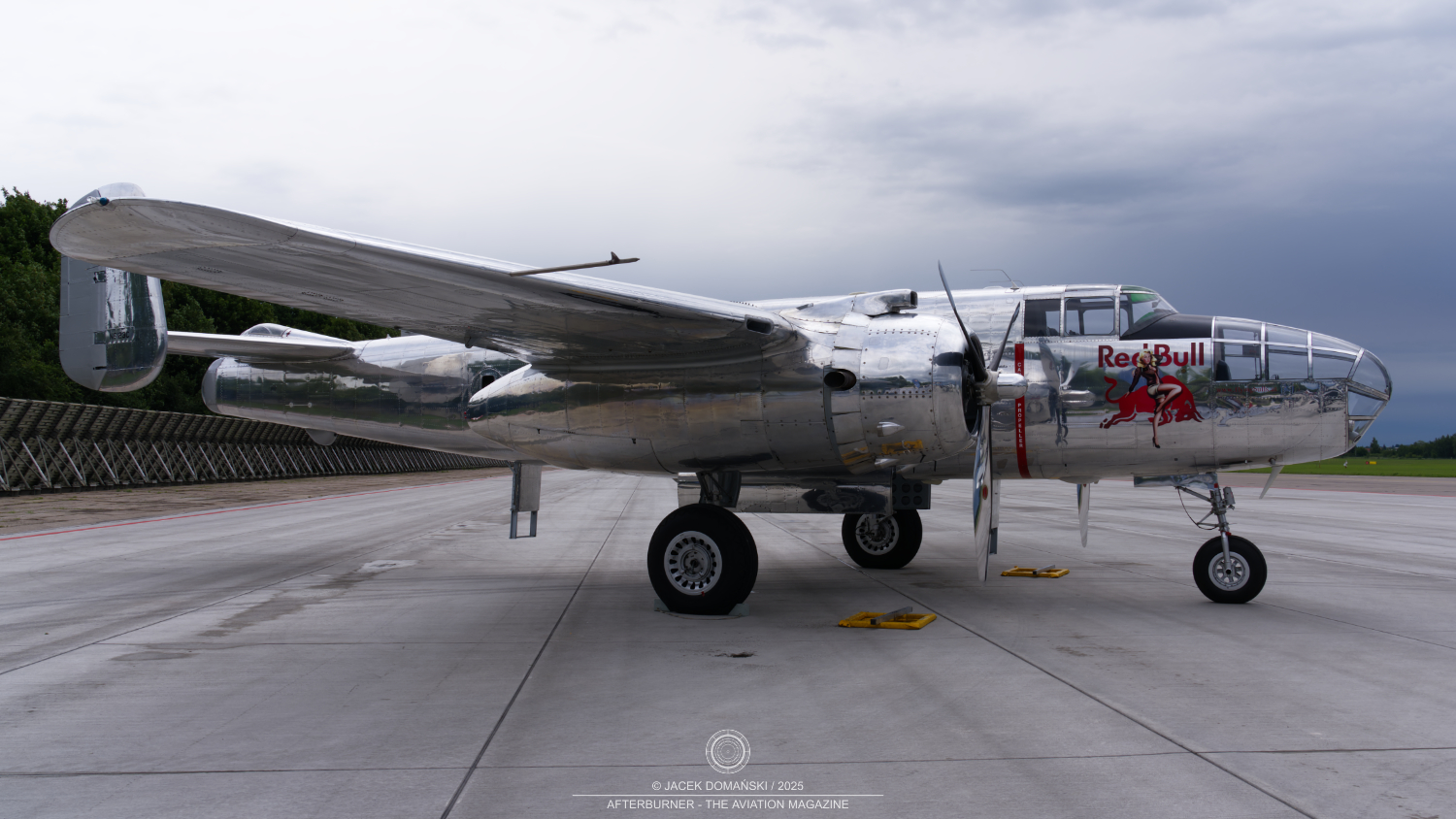
Cover photo and photos 1, 2: B-25J Mitchell, the Flying Bulls collection

